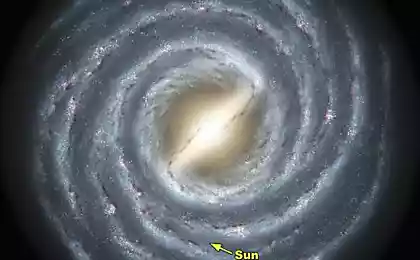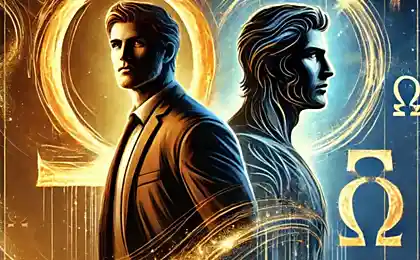949
To Alpha Centauri on the laser 20 years

With financial support from NASA, a physics professor Philip Lubin explores the possibility of using laser energy for interstellar travel.
Thinnest spaceship driven by laser, capable of reaching Alpha Centauri for 20 years may sound like science fiction, but it is not. And although its launch is in question, such a possibility does exist in the future, according to the professor of physics at the University of California at Santa Barbara Philip Lubin.
To further explore this possibility Lubin and his team at the Experimental Cosmology Group, University of California examined the use of lasers to bring the spacecraft to move. Group received one of 15 grants for NASA to study the concept. By developing cutting-edge technology, NASA program aims to make something that sounds like science fiction, science fact.
"One of the major problems of mankind is the study of other planetary systems by sending probes and possibly the detection of life" - said Lubin. "We offer a system that will allow us to take the first step toward interstellar probe, using the energy of the laser beam in combination with a small-size probes. Along with the latest work in the field of photonics, we can now imagine a union of technology, which will provide the ability to create a realistic approach to sending probes beyond our solar system ".
The main aim of the group UC is to send a small probe in addition to the current remote sensing produced by the orbital and ground-based telescopes. Funding will allow the team Lubin create a more complete vision of fully functional flat spacecraft equipped with a source of energy, communications and laser photon-driven engines. The project, called DEEP-IN (Directed Energy Propulsion for Interstellar exploratioN), also will design elements of the laser devices required for the development of technology.
The key to the functioning of the system lies in the possibility of creating a photon engine and ultra-light probes. Despite the ability to propel the spacecraft of any mass, small probes are moving faster and are more suited for interstellar missions.
In accordance with the project DEEP-IN, power plants will remain in orbit of the Earth (or thereabouts), while retaining the ability to drive a highly integrated spacecraft at a rate much higher than the rate that can achieve at the moment, scientists. Laser photon engine is used as pressure energy photons transmitted stream to bring the spacecraft to move. Without significant speed limits, this technology will make it possible to move at nearly the speed that is necessary for interstellar travel.
According to the statement Lubin, the same system can be used for many other purposes, including movement within our solar system, for example, for rapid delivery of probes to Mars, as well as to protect the planet. As another example of this technology at the spring conference Planetary Defense Conference in Italy, the University of California, took part in the experiment on the reflection of the simulated threat of collision of an asteroid with the Earth. The decision of the group: change the direction of motion of the asteroid, using technology DE-STAR, originally proposed by Lubin and Gary Hughes, an assistant professor of California Polytechnic State University, San Luis Obispo.
DE-STAR (Directed Energy Solar Targeting of Asteroids and exploRation) - is a technology of energy of directed motion, proposed for the creation of spaceships, developing near-light speed, and to reduce the potential threat of the world such as the threat posed by asteroids and comets. This technology is completely unified and changeable for a wide range of distribution, so that it can be used today for small missions, which aim to protect the planet, but in the future it can be extended to create a spacecraft equipped with a photon engine, and to ensure that the objectives such as program DEEP-IN.
"Despite the fact that this concept is not suitable for all spacecraft it opens radically new opportunities" - said Lubin. "This project - a first step toward interstellar mission, but much more important is that we carry out research and develop appropriate technology base. This will give us an opportunity to create a single photon engine capable of sending millions of small probes.
"We have to radically rethink our strategy in order not to give up dreams to reach the stars" - said Lubin. "DEEP-IN will help us get closer to that goal in terms of technology, and although it is not easy to start this work for us is technologically possible".
[ source ]
Source: geektimes.ru/post/253104/
The structure of the tail seahorse will help develop new robotic armor and grippers
20 pictures, which have nothing to add























